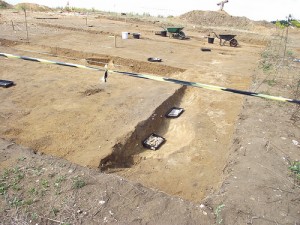By Lauren Gibbons

Archaeology digs in Michigan uncover ancient farming practices. Photo: Gary_Troughton
On the surface, Michigan might not seem like the nation’s most historic place.
But to many archaeologists and other experts, the state holds a wealth of evidence about the past and remains an important player in providing insights to the past.
For example, new developments in the archaeological world include research on ancient farming practices in Michigan and elsewhere in the region.
“We’re doing a lot of things that other places haven’t done yet,” said Lynne Goldstein, an anthropology professor at Michigan State University, which hosted the latest Midwest Archaeological Conference.
Findings gathered from archaeologists suggest that ancient farmers implemented several domesticated foods and agricultural practices much earlier than previously predicted, said MSU anthropology professor William Lovis, who curated the farming exhibit at the conference.
The exhibit is on display at the MSU Museum in East Lansing.
Lovis said different and more modern methods of approaching archaeological sites, helped with the discoveries, including a new process called accelerator mass spectrometer dating, that lets researchers more accurately determine the age of tiny fragments of material.
Lovis cited Michigan archaeologists as forerunners in the area.
Domesticated crops in Michigan were being used as early as 4,000 years ago. Squash is the earliest known crop, and sunflowers and corn were close behind. New evidence suggests corn was first grown in Michigan more than 2,000 years ago, as opposed to previous estimates of 1,400 to 1,500 years.
“This is breaking news on the origin of food production,” Lovis said. “We’re exploring very current methods of approaching these issues, and it’s clear the timing and spread of crops like corn and squash go further back then we thought.”
Programs such as Campus Archaeology, a course run by Goldstein that allows students to excavate areas of MSU’s campus, was also highlighted at the conference as an innovative way to train archaeologists while preserving pieces of university history.
In July, the team discovered a forgotten wall of a boiler room built in 1900 near Morrill Hall that was not shown on construction maps.
New developments about practices of ancients and previous generations can capture the attention of the public, MSU Museum communications manager Lora Helou said.
Archaeological exhibits help the public better understand true impact on a state with such a rich history, she said.
